Cruciferous phytochemical Diindolylmethane has anti-estrogen potential for women and might work for men, too.
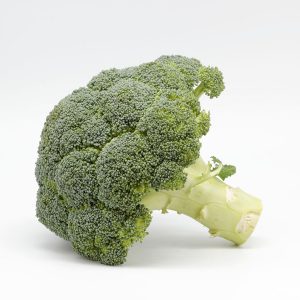
DIM is a plant-derived compound found in cruciferous vegetables like kale, broccoli, brussels sprouts, and cauliflower. DIM may balance hormonal activity, contribute to better metabolism, and slightly increase free testosterone levels in the body. In low doses, DIM may help:
- “Free” Bound Testosterone. DIM releases “good” estrogen metabolites that bind to the same proteins testosterone uses, leaving more “free” testosterone available in the body.
- Act as an Aromatase Inhibitor. Aromatase is an enzyme that converts testosterone to an estrogen. DIM suppresses aromatase activity, protecting testosterone levels from depletion.
- Regulate Hormone Levels. DIM regulates levels of “bad” unmetabolized estrogen and “good” 2-hydroxy estrogen metabolites to help maintain healthy levels of active testosterone.1
Overview
Diindolylmethane (DIM) is the primary active metabolic compound derived from Indole-3 Carbinol (I3C), a chemical found in many vegetables of the Brassica family. You know this species of vegetable through broccoli, but it also includes red cabbage, mustard greens, bok choy, horseradish, watercress, kale, and many others.
Originally studied for its anti-inflammatory properties on respiratory inflammation, DIM was later found to have anti-viral and immune-boosting properties, which lead to DIM being clinically studied for the treatment and prevention of multiple forms of immune deficiency conditions and viral/bacterial infections.2
During an in-depth analysis of DIM’s metabolic and hormonal processes, researchers found that DIM might possess significant regulatory effects on testosterone & estrogen levels, potentially increasing active testosterone while reducing harmful, unmetabolized estrogens. Unfortunately, under certain circumstances, the opposite seems to also hold true.
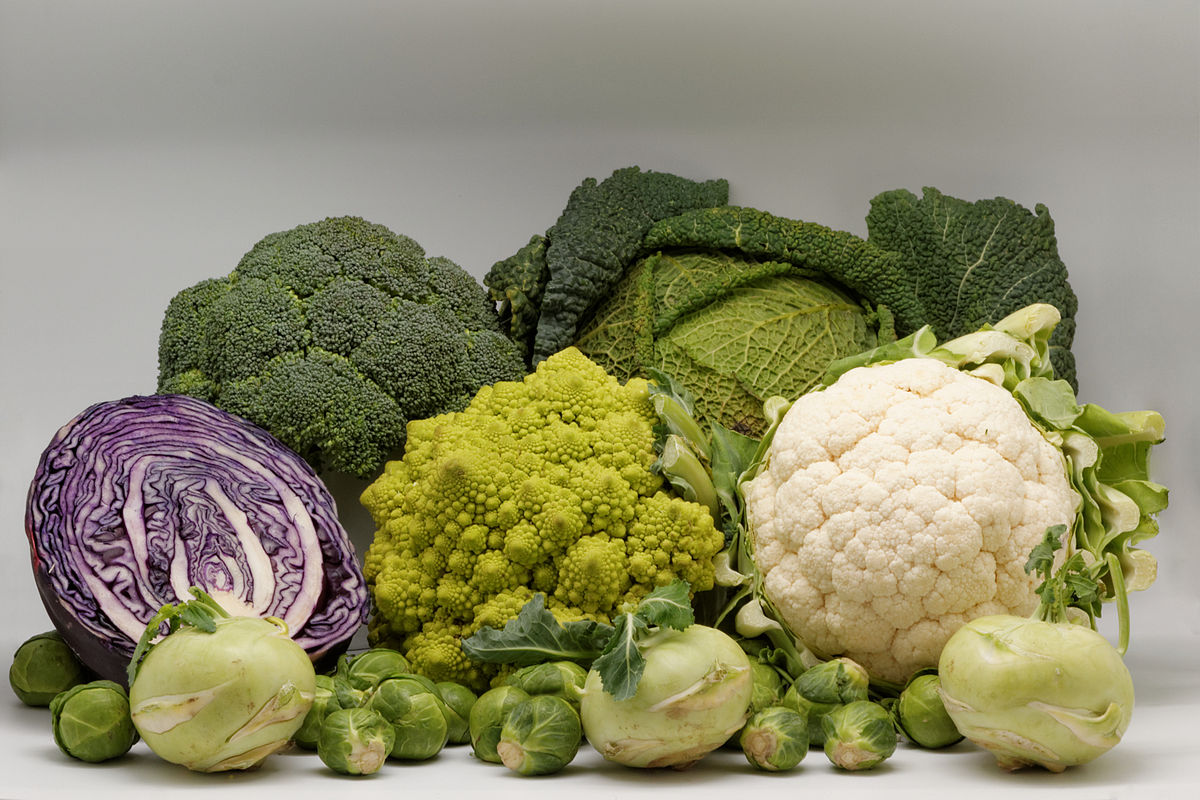
Diindolylmethane vs. Indole-3-Carbinol
As we already mentioned, DIM is derived from I3C–both being natural compounds found in Brassica vegetables; both believed to reduce the risk factors associated with negative estrogen-influenced conditions. Yet, despite their similarities, DIM is the preferred supplement choice over I3C.
Why?
The main reason: I3C works primarily as a precursor to DIM.
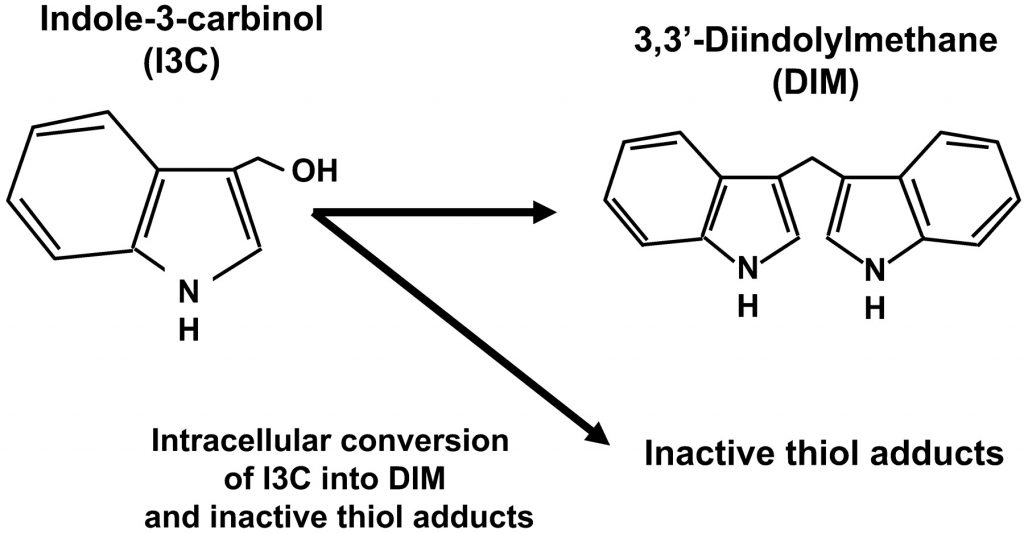
I3C converts into DIM during digestion, which is then released into the bloodstream to work its magic on aromatase enzymes, SHBG-bound testosterone, and unmetabolized estrogen metabolites. I3C itself remains inactive in the body, but after its conversion to DIM, it helps inhibit aromatase to decrease free-floating estradiol estrogen (E2) levels.
In other words, the positive health benefits associated with I3C are actually a result of its conversion to the more “bio-active” DIM. I3C on its own has actually shown to be entirely ineffective at accomplishing the same metabolic functions as DIM–additionally, I3C is relatively unstable for its ability to convert to compounds other than DIM.3 Due to this, most manufacturers avoid the I3C “step” altogether, opting instead for direct DIM action.
By no means does this suggest that I3C possesses zero clinical value–after all, it’s the most common natural “form” of DIM found in veggies–but its relative instability and reliance on enzymatic conversion makes it less valuable than DIM. Even so, some manufacturers combine the nutrients, perhaps in an attempt to mimic the phytocomposition of cruciferous vegetables–yet whether or not this provides any special benefits remains unknown.
DIM’s Possible T-Boosting Bio-Activities
Releases and safeguards T from T-binding carrier proteins.
DIM doesn’t actually cause the body to produce more testosterone–instead, it instigates the release of T bound to sex-hormone binding globulin (SHBG) protein, often preventing T from binding in the first place. The result is more “free” T that can easily cross the blood-brain barrier, enter fat cells, strengthen muscle tissue, etc. etc.
The method with which DIM inhibits SHBG involves the increase of estrogen compounds that have a higher affinity to SHBG than T–thus promoting the release of T from SHBG.4
Inhibits the aromatase enzyme.
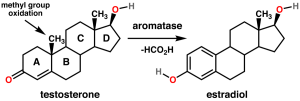 Aromatase converts testosterone into estrogen (what!?), a process that results in less male activity and more feminine bodily attributes (i.e. man boobs). This is especially pertinent to older men who experience heightened aromatase activity with each progressive year.
Aromatase converts testosterone into estrogen (what!?), a process that results in less male activity and more feminine bodily attributes (i.e. man boobs). This is especially pertinent to older men who experience heightened aromatase activity with each progressive year.
Fortunately, DIM may inhibit aromatase activity, preventing testosterone from converting to estrogen–which serves as a sort of two-for-one deal here: More T, less E. The end result is a healthier hormonal balance that’s further promoted by DIM’s next possible T-boosting bio-activity.5
Regulates levels of “bad” and “good” estrogens.
DIM encourages the metabolism of “bad” unmetabolized estrogens into “good” 2-hydroxy estrogen metabolites, which are largely responsible for the general benefits of estrogen:
- Antioxidant protection for the heart & brain.
- Increased bone strength.
- Release of T from SHBG.
This is important not only for T health, but for its reduction of “bad” 4-hydroxy and 16-hydroxy estrogen metabolites, which correlate with auto-immune disorders, obesity, and exposure to environmental chemicals. 4
In summary: DIM seems to direct estrogen toward the 2-hydroxy path, where it metabolizes into “good” estrogen. The 2-hydroxy estrogen helps release SHBG-bound T, increasing the body’s circulating “free” T levels. Together, “free” T and 2-hydroxy estrogen send hormonal signals in support of lean muscle growth and the body’s fat-burning capacity, while DIM further diminishes the overall level of “bad” estrogens–in effect, establishing hormonal harmony across the male body.
Research
A hefty portion of DIM’s clinical trials mainly focus on estrogenic health issues, particularly among post-menopausal women. As such, much of DIM’s purported anti-estrogenic effects don’t necessarily apply to men’s health, providing questionable T-boosting promise:
Animal Research
Numerous animal studies have researched the effects of DIM & I3C on both T and estradiol estrogen (E2) production. One in particular analyzed the anti-estrogenic effects of I3C supplementation on female mice:
- The study measured the rate of “estradiol 2-hydroxylation” (i.e. metabolism of “bad” estrogen to “good” estrogen) and concluded that I3C’s protective effect on the mice’s mammary health “may be mediated in part by the increased 2-hydroxylation and consequent inactivation of endogenous estrogens.” 7
However, when another study researched the effects of DIM on male rat health (sperm quality, oxidative stress, testicular size, etc.), the results were a little dicey. In one study group DIM showed significant anti-estrogen activity, but overall the study concluded that DIM:
- Had side effect on sperm quality.
- Increased oxidative stress in testicles.
- Decreased testicular tissue size.
It bears mentioning that these results altered on a dose-dependent manner, but not in a way that represented any identifiable pattern.8
Human Research
In vitro research suggest DIM inhibits aromatization through modulating the aromatase gene.
One in vitro study on human female breast cells suggested that DIM inhibits the aromatization of T to E by modulating the transcription of the aromatase gene–in effect, halting aromatase production along certain cell linings. If replicated in an in vivo human sample, this finding would have major implications on DIM’s anti-estrogenic capabilities. But, for the time being, the researchers seem to agree in their conclusion that the benefits associated with certain vegetables (in this case: cabbage) can be attributed to DIM’s “inhibition of aromatase expression.” 9
DIM may have inhibitory effects on the primary male sex hormone.
In terms of human male health, the results become a little dicey (again). Whereas the previous study proved optimistic in regards to DIM’s anti-aromatase effects on female breast cells, this study on prostate cells is less sure on the phytochemical’s anti-hormone actions:
- Particularly because the hormone DIM targeted was distinctly male: DHT–which, believe it or not, is an even manlier male hormone than testosterone. In this study, DIM worked as a “competitive inhibitor” against DHT, meaning that DIM prevented the hormone from binding to its active receptor site in prostate cells.10
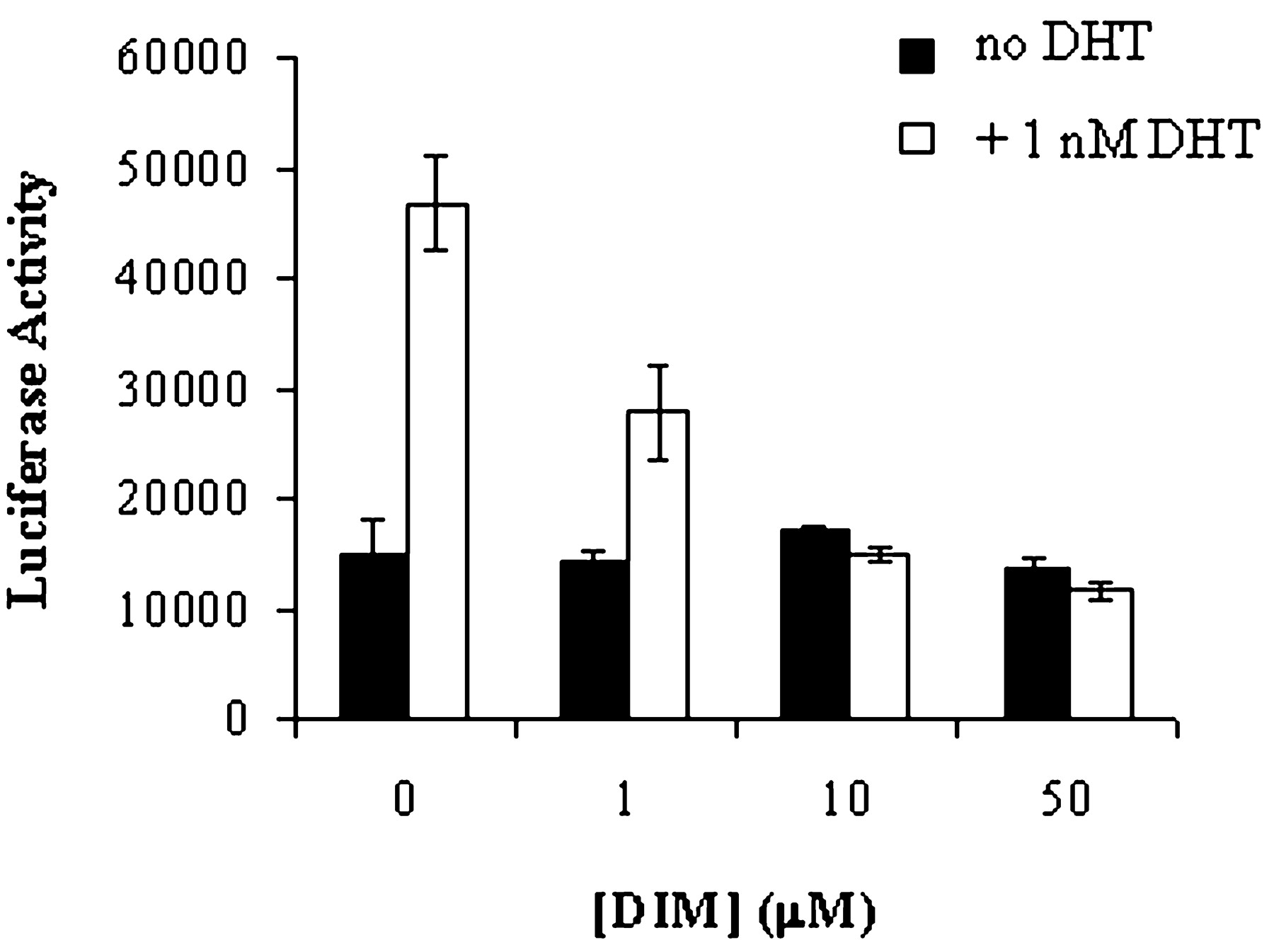
The upside there: DIM may help with prostate health under conditions of excess DHT, but the bigger picture on this “T-booster” is obscured by conflicting, contradictory research.
In conclusion, DIM seems to be conditionally estrogenic and anti-estrogenic.11 The trick is figuring out the conditions of these bio-actions.
Dosage
While many DIM supplements contain 100 mg-800 mg of DIM, some studies show that a daily dose of 30 mg DIM is enough for the average person–in actuality, the body may only absorb up to a 60 mg dose. DIM in high doses can work counterproductively, decreasing T levels, reversing hormonal balance and increasing estrogen production.12 Due to this, we recommend erring on the cautious side by sticking to lower DIM levels.
Side Effects
DIM is generally considered safe, with exception to its negative hormonal effects at higher dosages. As we previously pointed out, a vast majority of DIM research centers on post-menopausal women’s health, so DIM’s effects on men remain relatively unexplored.
Having said that, sticking to “lower DIM levels” seems safe (and still effective).
Available Forms
There are essentially 3 basic forms of Diindolylmethane supplementation:
- Brassica vegetables. Raw cruciferous veggies offer raw DIM, but you’ll have to eat a lot of them (~2 pounds per day) to achieve DIM’s full “T-boosting” potential. Regardless, green veggies are always recommended for a well-rounded diet.
- Indole-3-Carbinol. I3C supplements are often taken with DIM to further increases DIM levels. I3C requires enzymatic conversion in the stomach in order to become “bio-active” DIM–because of this, the rate of “bio-action” is much slower with I3C than it is with straight DIM.
- Diindolylmethane. The best form of DIM is simply DIM. While eating veggies supplies a wider variety of nutrients, straight DIM is the preferred option if you’re hoping to tap into its anti-estrogenic effects.
When choosing a DIM supplement, make sure it is in an easy-to-digest form. For instance, crystalline DIM is not conducive to absorption in the body’s GI tract–however, most DIM supplements come in liquid gel capsules, tablets, or “stacked” with other supplements. For the most part these work just fine.
Supplements in Review Recommendation
- Diindolylmethane, no more than 100 mg per day.
In recent years, DIM has become increasingly present in bodybuilding stacks and anti-estrogen supplements with generally favorable reviews. Yet, considering the varying degree of results and the contradictory nature of DIM research, we feel this is an anti-estrogen compound to let “marinate” for awhile.
Of course, always eat your green veggies. The fact that DIM & I3C work as the active nutrients of broccoli, kale, cabbage, etc. etc. has us excited to learn the full potential of these “super-food” phytochemicals. But until researchers reach a clearer understanding of what DIM actually does to men’s hormone levels, we recommend taking it easy on this one.
References
Will DIM hurt or help men with prostate cancer?
There is some early research to suggest that it does indeed help with prostate cancer by suppressing the growth of prostate cancer cells.
Hi Gleb, fantastic and sensible article on DIM. There is a lot of misinformation on DIM. I am a nutritionist and I have found that many women suffering from acne are overdosing on DIM i.e. up to 400mg a day. They may get temporarily relief from acne symptoms but in the long run put on weight and develop thyroid problems.
It is unfortunate that many alternative practitioners including Dr Berg and other naturpaths are recommending DIM on the basis of it being a DHT blocker. I was wondering what was the dosage provided to the prostate cancer patients in the the study you cited for DIM to act as a DHT blocker?
Could you also tell me the source of the information that you get that DIM is only absorbed at 60mg dosages. Is that on a daily basis?
Great article again. DIM is a powerful endocrine disruptor- working as both an anti-estrogenic and estrogenic and androgenic and anti-androgenic. This is undoubtedly likely to get so confusing to the average person.